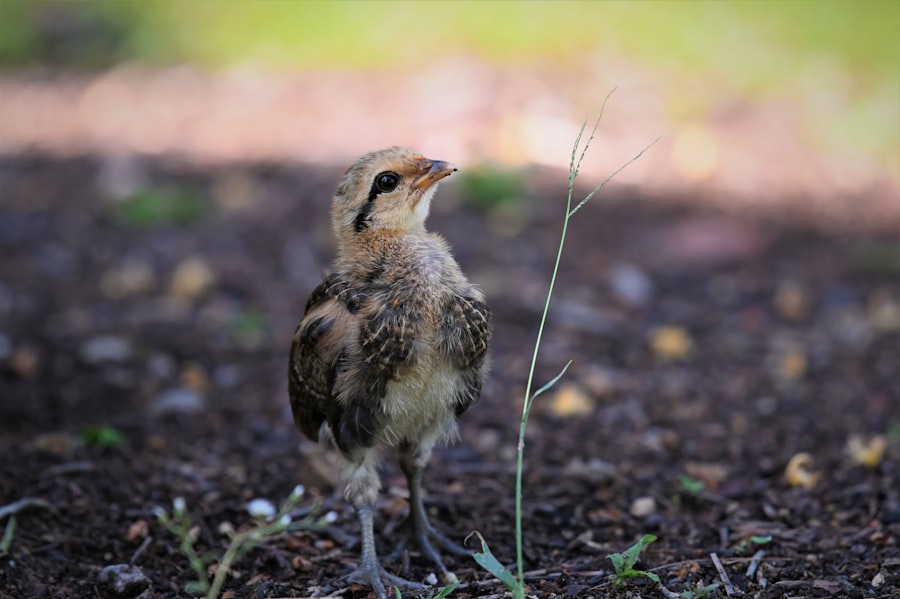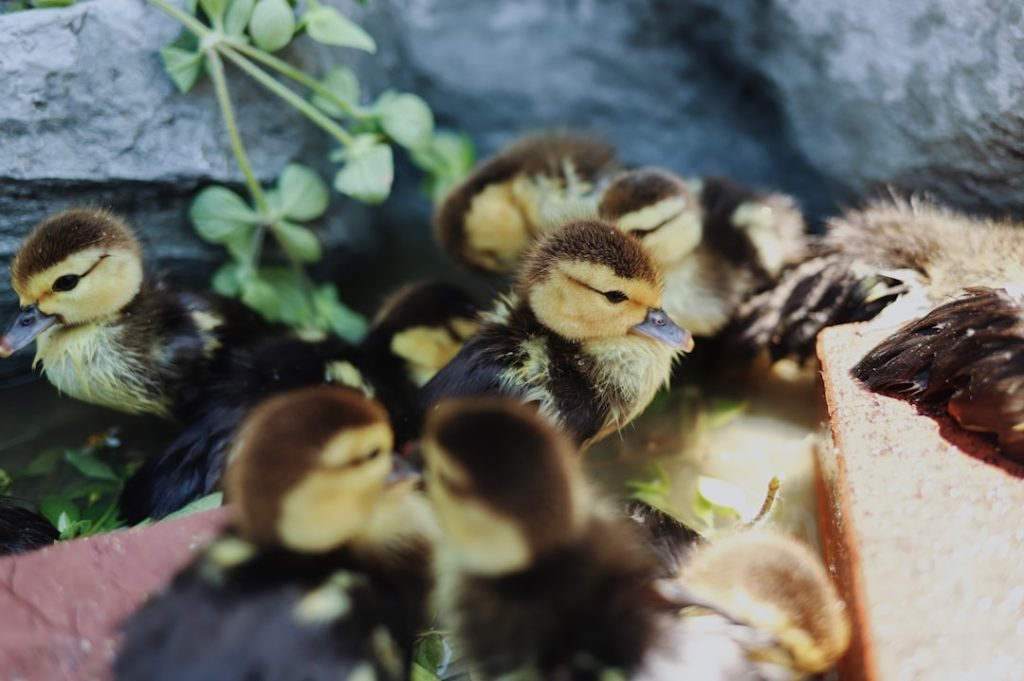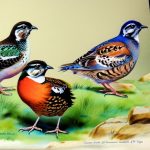Quail breeding has become an increasingly popular venture in Australia due to the high demand for quail meat in the local market. Quail meat is known for its delicate flavor and tender texture, making it a sought-after protein source for many consumers. In addition, quail eggs are also in demand for their nutritional value and unique taste. As a result, many farmers and entrepreneurs are turning to quail breeding as a profitable business opportunity.
Quail breeding in Australia is not only a lucrative business but also a sustainable one. Quails are known for their fast growth rate and high feed conversion efficiency, making them an ideal choice for meat production. Additionally, quails require minimal space and can be raised in a small backyard or on a larger commercial scale. With the right knowledge and resources, quail breeding can be a rewarding venture for individuals looking to enter the poultry industry.
Table of Contents
- 1 Selecting the Right Quail Breed for Meat Production
- 2 Housing and Equipment Requirements for Quail Breeding
- 3 Feeding and Nutrition for Quail Meat Production
- 4 Breeding and Incubation Process for Quail
- 5 Health and Disease Management in Quail Breeding
- 6 Processing and Marketing Quail Meat in Australia
- 7 FAQs
- 7.1 What is the best breed of quail for meat production in Australia?
- 7.2 What are the housing requirements for breeding quail for meat in Australia?
- 7.3 What is the ideal diet for quail being bred for meat in Australia?
- 7.4 What are the key considerations for breeding quail for meat in Australia?
- 7.5 What are the common health issues in breeding quail for meat in Australia?
- 7.6 What are the regulations for breeding quail for meat in Australia?
Key Takeaways
- Quail breeding is a growing industry in Australia, with a focus on meat production.
- When selecting a quail breed for meat production, consider factors such as growth rate and feed conversion ratio.
- Proper housing and equipment are essential for successful quail breeding, including adequate space and ventilation.
- A balanced diet with the right nutrients is crucial for quail meat production, including protein and vitamins.
- The breeding and incubation process for quail involves careful temperature and humidity control for successful hatching.
Selecting the Right Quail Breed for Meat Production
When it comes to quail breeding for meat production, selecting the right breed is crucial for success. In Australia, there are several popular quail breeds that are well-suited for meat production, including the Japanese quail (Coturnix japonica) and the Bobwhite quail (Colinus virginianus). The Japanese quail is the most commonly raised breed for meat and egg production due to its fast growth rate, high egg production, and adaptability to various environmental conditions. On the other hand, the Bobwhite quail is known for its flavorful meat and is often preferred by consumers for its unique taste.
When selecting a quail breed for meat production, it is important to consider factors such as growth rate, feed conversion efficiency, and adaptability to local climate conditions. Additionally, breeders should also consider the availability of day-old chicks and the market demand for specific quail breeds. By carefully evaluating these factors, breeders can make an informed decision on which quail breed is best suited for their meat production venture.
Housing and Equipment Requirements for Quail Breeding
Proper housing and equipment are essential for successful quail breeding for meat production. Quails require a clean and well-ventilated environment to thrive and reach their full growth potential. When it comes to housing, breeders can opt for various options such as cages, pens, or aviaries, depending on the scale of their operation. It is important to provide adequate space for the quails to move around and access food and water easily.
In addition to housing, breeders also need to invest in essential equipment such as feeders, waterers, and heating lamps to ensure the well-being of the quails. Feeders and waterers should be designed to minimize waste and contamination, while heating lamps are necessary to maintain optimal temperature conditions, especially during colder months. Furthermore, proper sanitation and waste management practices should be implemented to prevent the spread of diseases and ensure a healthy environment for the quails.
Feeding and Nutrition for Quail Meat Production
Feeding and nutrition play a critical role in quail meat production, as they directly impact the growth and overall health of the birds. Quails require a balanced diet that is high in protein to support their rapid growth and muscle development. A commercial quail feed that contains around 24-28% protein is recommended for meat production purposes. Additionally, breeders can supplement the quail feed with grains, greens, and insects to provide variety and additional nutrients to the birds.
It is important to ensure that quails have access to clean and fresh water at all times, as dehydration can significantly impact their growth and overall performance. In addition to water, providing grit or small stones is essential for proper digestion in quails. Breeders should also monitor the feed consumption of the quails regularly to ensure that they are receiving an adequate amount of nutrients for optimal growth.
Breeding and Incubation Process for Quail
The breeding and incubation process is a crucial aspect of quail meat production that requires careful attention and management. Quails reach sexual maturity at around 6-8 weeks of age, at which point they can start laying eggs. To encourage successful breeding, breeders should maintain a proper male-to-female ratio in their flock, with one male for every 4-5 females.
Once the quails start laying eggs, breeders can collect them daily and store them in a cool and humid environment until they are ready for incubation. The incubation period for quail eggs is approximately 17-18 days, during which they should be kept at a consistent temperature of around 37.5°C (99.5°F) with high humidity levels. Breeders can use commercial incubators or natural brooding methods to hatch the eggs successfully.
Health and Disease Management in Quail Breeding

Maintaining the health of the quails is essential for successful meat production and overall profitability. Breeders should implement strict biosecurity measures to prevent the introduction and spread of diseases within their flock. This includes regular cleaning and disinfection of housing and equipment, as well as limiting exposure to wild birds and other potential disease carriers.
In addition to biosecurity measures, breeders should also monitor the health of their quails regularly and be vigilant for any signs of illness or disease. Common health issues in quails include respiratory infections, parasites, and nutritional deficiencies. It is important to consult with a veterinarian or poultry health specialist if any health concerns arise to ensure proper diagnosis and treatment.
Processing and Marketing Quail Meat in Australia
Once the quails have reached market weight, breeders can consider processing them for meat production. Quails are typically processed at around 6-8 weeks of age when they reach an average weight of 150-200 grams. The processing of quails involves slaughtering, eviscerating, and packaging the meat for sale. Breeders can choose to process the quails themselves or outsource this task to a professional processing facility.
When it comes to marketing quail meat in Australia, breeders have various options to consider. They can sell their products directly to consumers through farmers’ markets, online platforms, or on-farm sales. Additionally, breeders can also establish partnerships with local restaurants, specialty grocery stores, or wholesalers to distribute their quail meat to a wider audience.
In conclusion, quail breeding for meat production in Australia offers a promising opportunity for individuals looking to enter the poultry industry. By selecting the right quail breed, providing proper housing and equipment, ensuring adequate feeding and nutrition, managing the breeding and incubation process, maintaining health and disease management practices, and effectively processing and marketing quail meat, breeders can establish a successful and sustainable venture in this growing market. With careful planning and dedication, quail breeding can be a rewarding business opportunity that contributes to the demand for high-quality quail meat in Australia’s food industry.
If you’re considering breeding quail for meat in Australia, you may also be interested in learning about the ideal number of chickens needed for a family of four. Understanding the right quantity of chickens can help ensure a sustainable and sufficient meat supply. Check out this informative article on PoultryWizard to gain insights into managing your poultry for meat production.
FAQs
What is the best breed of quail for meat production in Australia?
The best breed of quail for meat production in Australia is the Japanese quail (Coturnix japonica). They are known for their fast growth, high meat-to-bone ratio, and suitability for intensive farming.
What are the housing requirements for breeding quail for meat in Australia?
Quail for meat production in Australia require housing that provides protection from predators, adequate ventilation, and space for nesting and feeding. The housing should also be easy to clean and maintain.
What is the ideal diet for quail being bred for meat in Australia?
The ideal diet for quail being bred for meat in Australia consists of a high-protein feed, such as game bird starter or turkey starter, supplemented with greens, grains, and insects. It is important to provide a balanced diet to ensure proper growth and development.
What are the key considerations for breeding quail for meat in Australia?
Key considerations for breeding quail for meat in Australia include selecting the right breed, providing suitable housing and diet, managing breeding and egg production, and ensuring proper care and hygiene to prevent disease.
What are the common health issues in breeding quail for meat in Australia?
Common health issues in breeding quail for meat in Australia include respiratory infections, parasites, and nutritional deficiencies. It is important to monitor the health of the quail and provide appropriate veterinary care when needed.
What are the regulations for breeding quail for meat in Australia?
In Australia, breeding quail for meat is subject to regulations regarding animal welfare, biosecurity, and food safety. It is important to be aware of and comply with these regulations to ensure ethical and sustainable breeding practices.
Meet Walter, the feathered-friend fanatic of Florida! Nestled in the sunshine state, Walter struts through life with his feathered companions, clucking his way to happiness. With a coop that’s fancier than a five-star hotel, he’s the Don Juan of the chicken world. When he’s not teaching his hens to do the cha-cha, you’ll find him in a heated debate with his prized rooster, Sir Clucks-a-Lot. Walter’s poultry passion is no yolk; he’s the sunny-side-up guy you never knew you needed in your flock of friends!







